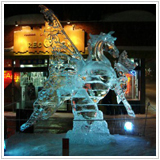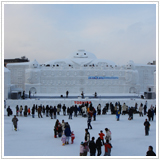
| LANGUAGE SELECT |
The Asahikawa International Ice Sculpture Competition |
||||
 |
 |
 |
||
| Asahikawa Winter Festival |
Ice Sculpture Gallery |
Asahikawa Winter Festival Gallery |
||
Ice Sculpture Contest 2011 Video |
||||
VIDEO DETAILS: This video has been kindly provided by our friends at Bear's Magazine. More Video: Asahikawa Winter Festival Hokkaido in Winter |
||||
Asahikawa Winter Festival History The Asahikawa Winter Festival began in 1947 and was known as the "Iyomante" (Bear festival in Ainu). It's primary purpose was to allow people to find some way to enjoy the cold and snow during the coldest month of the long Hokkaido winter. The name changed to the Asahikawa Winter festival in 1960 and since then, many activities have been added to make the Asahikawa Winter Festival one of the most well known winter festivals in Japan. Growing in stature year by year, this is definitely a great event to be involved in if visiting Asahikawa in early February. |
||||

Held in conjunction with the Asahikawa Winter Festival, the The International Ice Sculpture Competition is one of the many highlights on Asahikawa's Winter calendar. |
FEATURED
  For a pension with a difference, you need look no further than Pension Totori. Conveniently located 25 minutes from Asahikawa city, this large, elegant pension is the perfect way to spend a relaxing vacation. |
